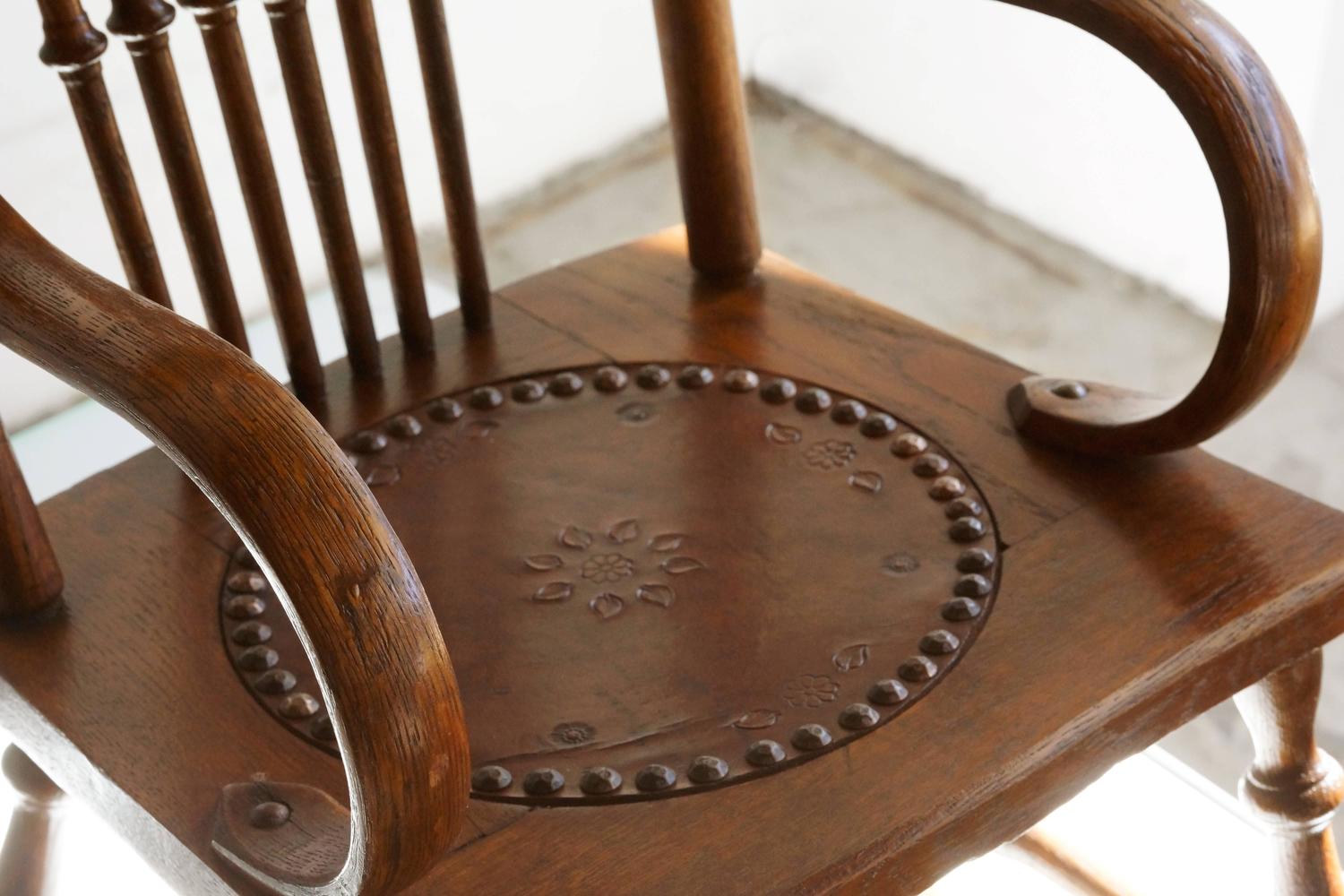Appreciation and Value of Leather Antique Rocking Chairs

The enduring appeal of antique leather rocking chairs transcends mere functionality; they embody a rich tapestry of history, craftsmanship, and enduring comfort. These pieces serve as tangible links to bygone eras, whispering tales of families gathered, stories shared, and moments of quiet contemplation. Their value, therefore, extends far beyond monetary worth, encompassing a profound sense of heritage and aesthetic appreciation.
The intrinsic value of a leather antique rocking chair is a complex interplay of several key factors. While the inherent beauty and comfort of the piece contribute significantly, the market ultimately reflects the confluence of material quality, maker prestige, age, condition, and style.
Leather Versus Other Materials, Leather antique rocking chair
Leather antique rocking chairs often command higher prices than those crafted from other materials, such as wood alone. The supple texture, rich patina developed over time, and inherent luxuriousness of leather contribute to its perceived value. However, the condition of the leather is paramount; well-preserved leather significantly increases the value, while severely damaged leather can depreciate it considerably. Conversely, a meticulously crafted wooden rocking chair, especially one from a renowned maker, can also hold significant value, particularly if it exhibits exceptional joinery or intricate carving. The ultimate value depends on the specific characteristics of each piece.
Factors Influencing Value and Collectibility
Several factors significantly influence the value and collectibility of leather antique rocking chairs. The maker’s reputation is a primary determinant; chairs by renowned furniture makers or from specific historical periods often fetch significantly higher prices. The age of the chair is another crucial factor; older chairs, particularly those dating back to the 18th or 19th centuries, are typically more valuable, assuming they are in good condition. The chair’s condition is equally important; well-preserved pieces with minimal wear and tear command higher prices than those showing significant damage or requiring extensive restoration. Finally, the style of the chair influences its value; certain styles, such as those reflecting specific historical periods or artistic movements, are more sought after by collectors.
Detailed Description for Appraisal or Sale
A comprehensive description for appraisal or sale should meticulously document all aspects of the chair. This includes identifying the maker (if known), noting the approximate age based on style and construction, specifying the type of leather (e.g., full-grain, top-grain), detailing any unique design features (e.g., carvings, inlay), describing the chair’s overall condition (including any repairs or restorations), and providing precise measurements (height, width, depth). For example: “A late 19th-century American rocking chair attributed to the Stickley Brothers, crafted from solid oak and upholstered in richly patinated, full-grain leather. The chair exhibits excellent craftsmanship, with minimal wear consistent with age. Measurements: Height 42 inches, Width 26 inches, Depth 24 inches.”
Examples of Notable Leather Antique Rocking Chairs
While specific examples and their detailed provenance may require specialized research, certain iconic styles and periods stand out. For instance, rocking chairs from the Arts & Crafts movement, often featuring simple, elegant lines and high-quality materials, are highly sought after. Similarly, rocking chairs from the Victorian era, sometimes showcasing elaborate ornamentation and plush upholstery, also hold considerable value. The specific value of any chair depends on the interplay of the factors discussed previously, including the maker, condition, and rarity of the specific design.
